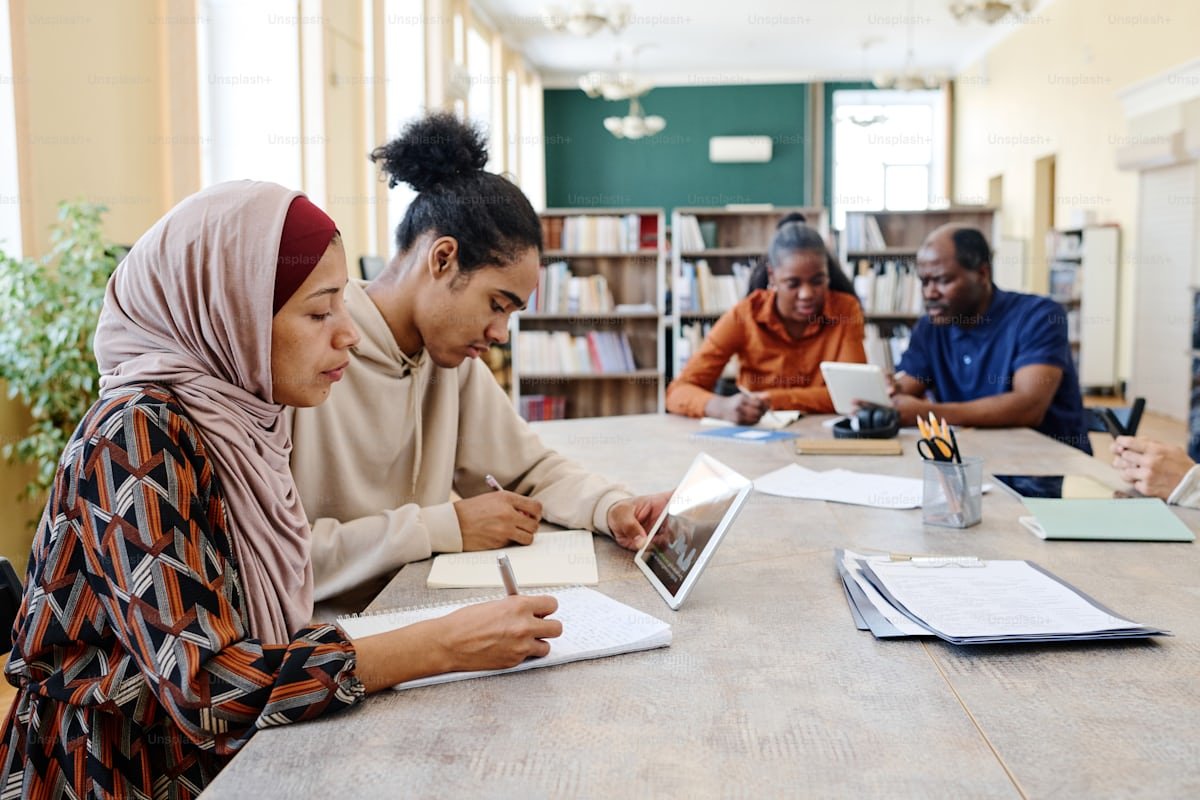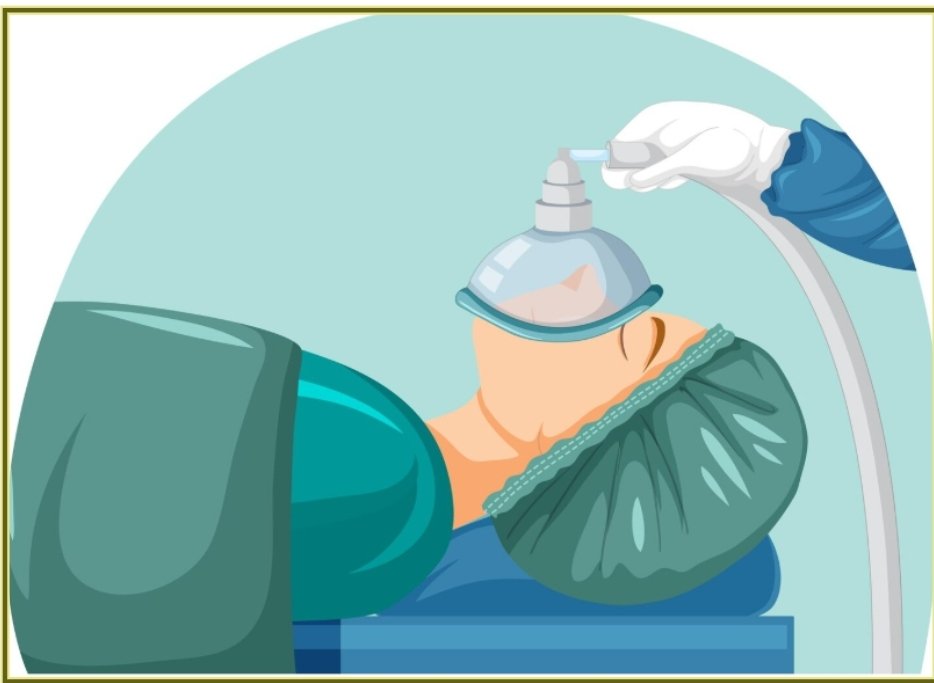Health
Comparative Analysis of Educational Access in Kenya and Sudan

Introduction
Why does access to education in Kenya and Sudan differ? The central problem is that children in Sudan face far more severe disruptions—infrastructure collapse, conflict-driven school closures, and entrenched poverty—while Kenya has largely stable investment and policies. The solution lies in strengthening governance, boosting public spending, and addressing gender and inequity barriers to achieve more equitable educational access.
1. Educational Infrastructure
Kenya benefits from relatively developed school infrastructure, modern classrooms, teacher training centres, and even digital learning tools—stemming from decades of investment and curriculum reform . In contrast, conflict-affected Sudan has seen the destruction of school buildings, bridges, and roads, leaving schools in disrepair or closed entirely. UNESCO reports that closures have left more than 17 million Sudanese children without access to education.
2. Conflict and Instability
Sudan’s prolonged civil wars and recent uprisings have severely disrupted education: over 90 % of Sudan’s ~19 million school‑age children currently lack formal schooling. Violent attacks on schools have surged fourfold since conflicts escalated in 2023–24. Kenya, while it suffers regional ethnic and electoral violence, has not seen widescale school disruption. Refugee‑hosting camps in Kenya are managed through emergency education programs to integrate displaced children into schooling.
3. Government Policy
Kenya’s constitution guarantees free and compulsory basic education (since 2010), and the 2003 Free Primary Education program eliminated school fees, uniforms, and textbooks as barriers for low‑income families. Kenya also allocates about 6‑7 % of its budget to education and is rated Africa’s strongest education system by global indices. Sudan, meanwhile, formally guarantees free basic education—but actual implementation depends on fees for uniforms and supplies. Budget allocation remains low, often under 8 %, well below the UNESCO‑recommended 15–20 % threshold.
4. Poverty and Inequality
Poverty in Kenya remains a significant barrier: many rural families cannot afford secondary education or the hidden costs, despite free primary schooling. Government cost‑sharing models for higher education further limit access to lower‑income groups. In Sudan, poverty is more extreme, with families unable even to afford stationery or uniforms—despite tuition being free. Many children, especially boys, drop out to support their families, while girls are withdrawn for early marriage or care duties.
5. Gender Disparities
In Kenya, female primary‑school enrollment is nearly equal to male, though disparity widens at secondary level—with only 48 % girls versus 51 % boys. In the poorest quintiles, girls’ attendance may be under 25 % compared to over 33 % for boys. Solutions include increasing female teacher recruitment and targeting rural and marginalized communities for girls’ support. Sudan shows far wider gender gaps: female literacy hovers around 50 %, male at 72%. Cultural norms, early marriage, limited female teachers—and safety issues such as harassment or abduction—drive girls out of school.
Integrated Challenges and Interactions
These factors intersect. In Sudan, conflict exacerbates poverty, destabilizes governance, damages infrastructure, and intensifies gender-based exclusion. In Kenya, while better policies exist, regional poverty and ethnic inequality persist in limiting access—especially in North Eastern and coastal provinces most affected by localized conflict or underinvestment.
Semantic SEO & NPL Alignment
This post targets the main keyword “why does access to education in Kenya and Sudan differ”, and integrates semantic topics through keyword clusters: Educational Infrastructure, Conflict and Instability, Government Policy, Poverty and Inequality, and Gender Disparities. Each heading addresses one cluster, helping the search engine understand topical relevance and context.
Conclusion
Access to education in Kenya and Sudan differs dramatically due to disparities in infrastructure, conflict, governance, poverty, and gender norms. Kenya has achieved notable progress through constitutional guarantees, free primary education, budget investment, and gender-focused efforts. Sudan continues to suffer from war-induced school closures, chronic underfunding, poverty, and entrenched gender barriers.

Health
Master the ECMO Certification: Ultimate Practice Test Prep Guide & Top Study Resources

Extracorporeal Membrane Oxygenation is a life-saving technology used in critical care settings for patients with severe cardiac or respiratory failure. Often considered a last-resort intervention when conventional therapies fail, ECMO has transformed survival prospects for patients with life-threatening conditions.
For healthcare professionals aiming to play a vital role in ECMO care, earning an ECMO certification is both a mark of competence and a career-advancing milestone.
What is ECMO?
Extracorporeal Membrane Oxygenation (ECMO) is an advanced form of life support that provides cardiac and respiratory assistance to critically ill patients. It works by temporarily taking over the functions of the heart and/or lungs, allowing these organs to rest and heal.
How ECMO Works
The ECMO machine pumps blood from the patient’s body into an artificial lung (oxygenator) that adds oxygen and removes carbon dioxide. The oxygenated blood is then returned to the body, either to support heart function, lung function, or both. There are two primary types of ECMO:
- Veno-Arterial (VA) ECMO – Supports both the heart and lungs by diverting blood from a vein and returning it to an artery.
- Veno-Venous (VV) ECMO – Supports only the lungs by diverting and returning blood through veins.
Indications for ECMO
ECMO is not a first-line treatment but is employed when other interventions fail. Common indications include:
- Severe ARDS
- Cardiogenic shock
- Post-cardiotomy failure
- Cardiac arrest (ECPR)
- Bridge to heart or lung transplantation
- Pulmonary embolism with hemodynamic compromise
- Congenital diaphragmatic hernia in neonates
Each patient’s eligibility for ECMO is determined by a multidisciplinary team, weighing risks and benefits.
Components of the ECMO System
An ECMO circuit includes several critical components:
- Cannulas: Tubes inserted into blood vessels to draw and return blood.
- Pump: Moves blood through the circuit (roller or centrifugal pump).
- Oxygenator: Performs gas exchange, adding oxygen and removing CO2.
- Heat exchanger: Maintains blood at body temperature.
- Monitor and Alarms: Track parameters such as blood flow, pressure, and oxygenation.
Proper management of this complex system requires in-depth knowledge and technical skill, which is why ECMO certification has become essential for healthcare professionals involved in ECMO care.
The Role of the ECMO Specialist
An ECMO specialist is a trained healthcare provider responsible for monitoring and managing the ECMO machine and the patient during ECMO therapy. Specialists often come from backgrounds such as nursing, respiratory therapy, or perfusion.
Responsibilities:
- Monitoring ECMO circuit parameters
- Troubleshooting alarms and equipment issues
- Managing anticoagulation therapy
- Collaborating with intensivists, surgeons, and nurses
- Ensuring patient safety and comfort
ECMO specialists require formal training, hands-on experience, and often seek ECMO certification to validate their knowledge and enhance their credibility.
Importance of ECMO Certification
ECMO certification programs provide a standardized way for healthcare professionals to demonstrate competency in managing ECMO systems and patients. Certification is typically pursued through professional organizations like:
- Extracorporeal Life Support Organization (ELSO)
- American Society of ExtraCorporeal Technology (AmSECT)
Certification confirms the specialist’s:
- Understanding of ECMO principles and physiology
- Ability to manage equipment safely
- Skill in responding to emergencies and complications
Additionally, many hospitals require or strongly prefer certification as part of their ECMO program staffing standards.
Training and Education
ECMO training typically includes:
- Didactic lectures covering physiology, circuit design, indications, and complications
- High-fidelity simulations
- Hands-on clinical experience
- Continued competency assessments
Courses range from a few days to several weeks and are offered by hospitals, academic institutions, and professional organizations. Recertification ensures continued knowledge as technology and guidelines evolve.
Common Complications of ECMO
While ECMO can be life-saving, it carries significant risks, including:
- Bleeding: Due to anticoagulation and invasive procedures
- Infection: Cannulation sites and prolonged ICU stays increase risk
- Thromboembolism: Clots can form in the circuit or patient
- Hemolysis: Destruction of red blood cells due to pump mechanisms
- Neurological Injury: Risk of stroke or brain hemorrhage
Monitoring, prevention protocols, and early intervention are essential to mitigate these complications.
ECMO and COVID-19
During the COVID-19 pandemic, ECMO gained global attention for its role in treating severe respiratory failure. It served as a bridge for recovery or transplantation in patients who developed refractory ARDS. Hospitals expanded ECMO programs and trained more specialists to meet demand, further highlighting the importance of certification and structured training.
Future Directions
Looking ahead, ECMO will continue to evolve as research and technology advance. Areas of focus include:
- Artificial intelligence integration for predictive analytics
- Wearable or implantable ECMO devices
- Personalized anticoagulation protocols
- Tele-ECMO for remote monitoring and guidance
As the field grows, professionals must stay informed and certified to ensure high standards of care.
Conclusion
Extracorporeal Membrane Oxygenation has revolutionized critical care, offering a second chance at life for patients once considered untreatable. Mastery of ECMO requires not just technical skill, but a deep understanding of physiology, teamwork, and rapid decision-making.

Health
What Does SWD Stand for in Special Education? Understanding Students With Disabilities

Introduction
Many educators, parents, and school staff see the acronym SWD on forms or IEP documents and wonder: what does it mean—and what implications does it carry for supporting a student? The problem is lack of clarity: without knowing what SWD stands for in special education, professionals and caregivers may misinterpret student needs, leading to inadequate support or misunderstanding. The solution lies in understanding that SWD = Students With Disabilities, a legal and educational classification under U.S. law that triggers specialized services such as IEP (Individualized Education Program) under IDEA (Individuals with Disabilities Education Act). This understanding is critical to driving effective inclusive education, disability accommodations, and special education services.
What Does SWD Stand For?
According to multiple U.S. special education glossaries, SWD universally stands for “Students With Disabilities.” This term refers to learners who have been identified—through assessment—as having physical, cognitive, emotional, or learning disabilities, and who require specialized instruction or supports.
Who Qualifies as SWD?
Students eligible under IDEA’s thirteen disability categories—such as autism, specific learning disabilities, emotional disturbance, vision or hearing impairments—are considered SWD when they demonstrate a need for special education services.
Related Legal Framework: IDEA and IEP
Under the IDEA (Individuals with Disabilities Education Act), students identified as SWD are entitled to a legally binding Individualized Education Program (IEP). The IEP outlines their current academic performance, measurable goals, accommodations, and related services. Schools must update each IEP annually and ensure Free and Appropriate Public Education (FAPE) and placement in the Least Restrictive Environment (LRE) wherever feasible.
Special Education Services for SWD
Support for SWD is highly individualized. Schools may provide:
- IEP‑based instruction tailored to student needs
- Classroom accommodations, such as extended time, audiobooks, or preferential seating
- Specialized instruction in resource rooms or small group settings
- Related services, including speech therapy, occupational therapy, counseling
- Assistive technology, such as text‑to‑speech software or communication devices
Importance of Inclusive Education
Inclusive education emphasizes that SWD should learn alongside non‑disabled peers whenever appropriate. Under LRE principles, to the maximum extent appropriate, SWD are educated in general education settings with supplementary aids and services, promoting social integration and higher academic expectations.
Disability Accommodations & 504 Plans
Not all SWD are IDEA‑eligible; some may qualify under Section 504 of the Rehabilitation Act, qualifying them for 504 Plans rather than IEPs. These plans ensure disability accommodations—like modified tests or classroom setups—to provide equal access under civil‑rights law, though without the full IEP process.
Common Classroom Settings for SWD
Depending on their needs, SWD may receive support via:
- Self‑contained classrooms, for more intensive instruction or smaller teacher‑student ratios
- Resource rooms, where students receive targeted remediation in specific subjects
- General education inclusion with support services integrated into the classroom
Why Understanding SWD Matters
Knowing what SWD stands for in special education is foundational for professionals, caregivers, and advocates. It ensures legitimate access to services tied to federal protections and prevents miscommunication. It also reinforces person‑first language, respecting that these are students with potential, not defined by their disability label.
Putting It All Together — Semantic Connections
By incorporating keywords like IEP, IDEA, special education services, disability accommodations, and inclusive education, this article aligns with both user intent and SEO best practices. Each concept maps back to how SWD is defined and supported under federal law, thus creating a strong semantic cluster for search relevance.
Conclusion
In summary, SWD stands for Students With Disabilities, a formal classification that opens doors to critical supports under IDEA, including an IEP, accommodations, and inclusion in the classroom. Understanding this acronym is not just about decoding terminology—it’s about empowering students with disabilities to access equitable education. By recognizing the legal foundations and practical supports (IEP, IDEA, accommodations, inclusion), educators and families can better ensure every SWD receives the personalized, dignified, and effective instruction they deserve.

Health
What Type of Education Does the Center for Allied Health Education Offer

Introduction
Many prospective healthcare professionals struggle to find a vocational school that offers the right combination of accredited clinical education and practical healthcare training in allied health fields. If you’re wondering what type of education the Center for Allied Health Education offers, here’s the problem: applicants need programs that lead to recognized medical certification and real-world skills—but it’s often unclear whether CAHE delivers that. The solution is straightforward: CAHE provides focused Allied Health Programs in Diagnostic Medical Sonography, Radiologic Technology, and Surgical Technology—certificate and post‑secondary programs designed for clinical education and career readiness.
In the following sections, you’ll get a data‑driven overview of CAHE’s offerings, outcomes, and accreditation so you can decide whether it’s the right vocational health school for your goals.
Programs Offered at CAHE
Diagnostic Medical Sonography (Ultrasound Technician)
CAHE’s most common program is Diagnostic Medical Sonography: a post‑secondary certificate averaging 64 degrees awarded per year. Students learn ultrasound imaging techniques via classroom theory and clinical rotations. This is a key Allied Health program leading to national certification opportunities.
Radiologic Technology / Radiographer
The Radiologic Technology program, also known as Radiographer training, is CAHE’s second-largest offering—about 41 certificate degrees awarded annually. Coursework includes X‑ray operation, safety protocols, image analysis, and patient care in clinical settings.
Radiation Therapy Technology (Radiation Therapist)
CAHE also offers a program in Radiation Therapy Technology, with around 27 degrees awarded each year. This clinical‑education‑focused program prepares students to assist in radiation treatments under supervision.
Admission & Institution Overview
Located in Brooklyn, New York, CAHE is a private for‑profit vocational health school with a full‑time enrollment of about 113 students. The acceptance rate hovers between 18–19%, indicating selective admissions. Tuition averages $19,200 per year, and overall net cost (after aid and loans) may reach around $42,000 annually.
Accreditation & Certification Pathways
CAHE’s programs align with allied health education standards recognized by the Commission on Accreditation of Allied Health Education Programs (CAAHEP), which accredits over 2,200 programs in 28 health disciplines. Graduates from CAAHEP‑accredited programs are eligible to sit for national Medical Certification exams (e.g. sonography, radiography, radiation therapy).
Many allied health fields also rely on national certification bodies such as the National Healthcareer Association (NHA), which offers credentials in medical assistant, billing & coding, phlebotomy, pharmacy technician, and more. Although CAHE does not appear to explicitly list medical assistant training, it enables students to prepare for such certifications depending on program curricula.
Why Choose CAHE’s Allied Health Programs?
Focused Clinical‑Education Model
Each program integrates hands‑on clinical training with classroom instruction. Students complete clinical rotations that simulate real healthcare environments—critical for Healthcare Training and clinical competency.
Career‑Ready Certifications
Upon successful completion, graduates are eligible for national certifications in their specialty—adding employer‑recognized credentials to their resume.
Small, Selective Environment
With a limited full‑time student body (~113), class sizes tend to remain small, fostering interaction with instructors and personalized guidance.
Outcome and Career Paths
In 2023, CAHE awarded a total of 168 degrees, with the majority conferred in Diagnostic Sonography, Radiography, and Radiation Therapy. Most graduates are women (approx. 80%). Retention and completion rates are strong: nearly 75% retention and 100% graduation within normal time.
Graduates typically pursue careers in hospitals, imaging centers, oncology departments, or outpatient facilities. These roles require certification, technical skill, and strong patient‑care acumen.
Semantic and SEO Relevance
This post addresses your main keyword “what type of education is Center for Allied Health Education” by systematically explaining the types of education offered: certificate and post‑secondary allied health programs in sonography, radiography, and radiation therapy. It weaves in group keywords naturally: Allied Health Programs (in program descriptions), Healthcare Training (clinical practicum focus), Clinical Education (hands‑on rotations), Medical Certification (prepares for credentialing), and Vocational Health School (private, for‑profit vocational context).
Conclusion
To sum up, the Center for Allied Health Education offers vocational certificate and postsecondary Allied Health Programs focused on Diagnostic Medical Sonography, Radiologic Technology, and Radiation Therapy Technology. These programs combine clinical education and classroom instruction to prepare students for medical certification and entry‑level healthcare roles.
If you’re looking for a selective, mission‑driven vocational health school in Brooklyn that prioritizes career‑ready training and real-world clinical exposure in key allied health fields, CAHE stands out as a focused and outcome‑oriented choice.

-

 Blog3 weeks ago
Blog3 weeks agoHow to Start a Health Blog: A Step-by-Step Guide for Beginners
-

 Health2 weeks ago
Health2 weeks agoMega-Personal.net Health Archives: Ultimate Guide to Wellness
-

 Health1 month ago
Health1 month agoHealthy camping recipe ideas: Nutritious food for great out
-

 Business3 weeks ago
Business3 weeks agoHow to Start a Home Health Business: A Complete 2025 Guide
-

 Health2 months ago
Health2 months agoHealthy Camping Recipes: Nutritious, Delicious Meals for the Outdoors
-

 Health2 weeks ago
Health2 weeks agoHow to make a manicotti: a step-by-step guide for a classic Italian dish
-

 Health2 months ago
Health2 months agoIs Chobani Yogurt Healthy? A Nutritionist’s Honest Take
-

 Food3 weeks ago
Food3 weeks agoWhat Foods Are Good for Vaginal Health?
